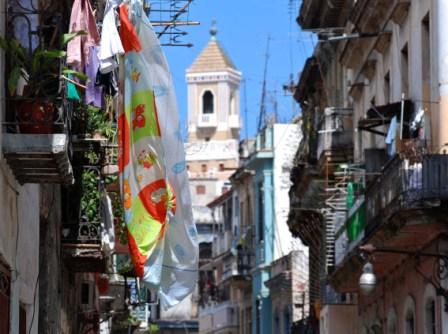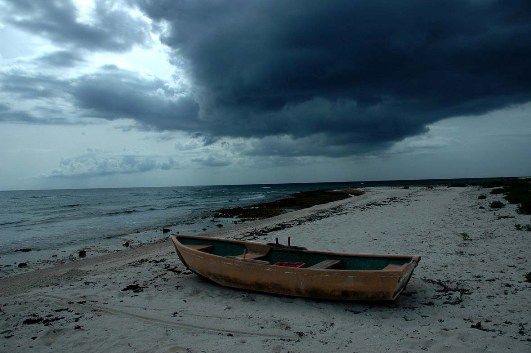Cuba Tourism Up Despite Crisis
By PATRICIA GROGG

HAVANA TIMES, March 21 (IPS) – The growth of tourism in Cuba in the first two months of this year has led to renewed hopes for the industry, once regarded as the engine of development on the island because of its rapid rise in the 1990s and its impact on the rest of the economy.
The tourism industry expanded by 5.2 percent in January and February compared with the same period last year, Tourism Minister Manuel Marrero announced. This is good news for Cuba, which is recovering from the devastation caused by three major hurricanes in 2008, at a time of global economic crisis with – so far – undetermined consequences.
“Tourism could take on its role as an economic engine again, if restrictions on travel by U.S. citizens to Cuba are lifted,” said economist Pavel Vidal in an article for the Economics Press Service, a publication of the IPS Havana bureau.
Last week the U.S. Congress passed a law permitting Cubans living in the United States to visit their family members in Cuba once a year. The number of flights to this Caribbean island nation is thus expected to rise, after falling by about 75 percent since 2004 in the wake of travel restrictions imposed by former U.S. President George W. Bush.

At least one million tourists from the United States are predicted to arrive on the island in the first year alone, if the ban on travel to Cuba by U.S. citizens, enforced since the 1960s as part of the economic embargo, is eliminated.
Economist Armando Nova stated in an article that tourism has a multiplier effect which has translated into investments in other branches of the economy.
In the past 15 years, technological changes have been introduced in agriculture, light industry, assembly and manufacture of elevators and air-conditioning equipment, communications, the construction materials industry and other sectors, so that 68 percent of the demand generated by tourism has been met within the country.
However, Nova says, in other areas the impact has declined because of reductions in investments, setbacks in the process of integration of tourism with industry and agriculture, difficulties in importing the supplies required for national production, more expensive local products, and revaluation of the convertible peso (CUC) against other hard currencies.

(Two currencies are presently used as legal tender in Cuba: the regular peso and the CUC. The latter was pegged to the dollar until October 2004, when the U.S. currency was removed from circulation on the island.)
“As well as generating considerable income in its own right, the tourism service industry is linked to upstream and downstream chains of production, and has improved the economic structure of the country and its diversification,” writes Nova.
Before 1990, the Cuban government focused its efforts on developing the sugar cane industry, which brought in a guaranteed, stable income from the country’s socialist allies in Eastern Europe. Until then, the number of foreign visitors was barely 300,000 a year.
But the economic crisis triggered by the collapse of the Soviet Union and East European socialist bloc forced the authorities to find an alternative source of revenue. Between 1990 and 2006, tourism captured one-seventh of total investments, while the annual number of visitors climbed to over two million.
Nova is not in favor of having a single sector driving the economy, but rather several leading industries. “In economics, a diversity of income sources is preferable to one single earner. This confers greater security, stability and sustainability on the economy,” he says.

Exporting professional and technical services, especially medical services to Venezuela, has overtaken tourism as the country’s main earner over the past five years. According to the National Statistics Office (ONE), these service exports brought in an income of some 8.4 billion dollars in 2008, more than three times the revenues from tourism.
“However, service exports cannot be regarded as an engine driving the economy, as they have few linked industries and a low multiplier effect on other sectors,” Vidal said.
“Cuban tourism has an inherent competitive advantage, based on the quality of its beaches, the climate, health and hygiene conditions, safety for tourists and a wealth of culture,” the expert said.
In 2008, over 2.3 million tourists came to Cuba, an increase of 9.3 percent over the previous year, while gross income rose by 13.5 percent. This growth, after two years of decline, was an exceptional result in the Caribbean region.
According to a report by the Caribbean Tourism Organization (CTO) comparing the industry’s performance in 2007 and 2008, 11 out of its 26 member countries experienced a decline or stagnation in the number of foreign visitors to their shores.
In December 2008, the statistics confirmed a fall in the number of countries receiving over one million tourists a year, like the Bahamas and Puerto Rico, which both reported declines of more than two percent, while the Dominican Republic received an identical number of visitors as in 2007. However, Jamaica experienced growth of 3.9 percent.
The CTO says that in the short term, several factors could influence the development of the vitally important tourism sector, including the global financial crisis and its effects in the United States, which is the main source of tourists, as well as unstable oil prices and the weakness of the dollar relative to other currencies.
On the other hand, the Caribbean is perceived as a relatively safe and stable region, which strengthens its appeal as a tourist destination.
